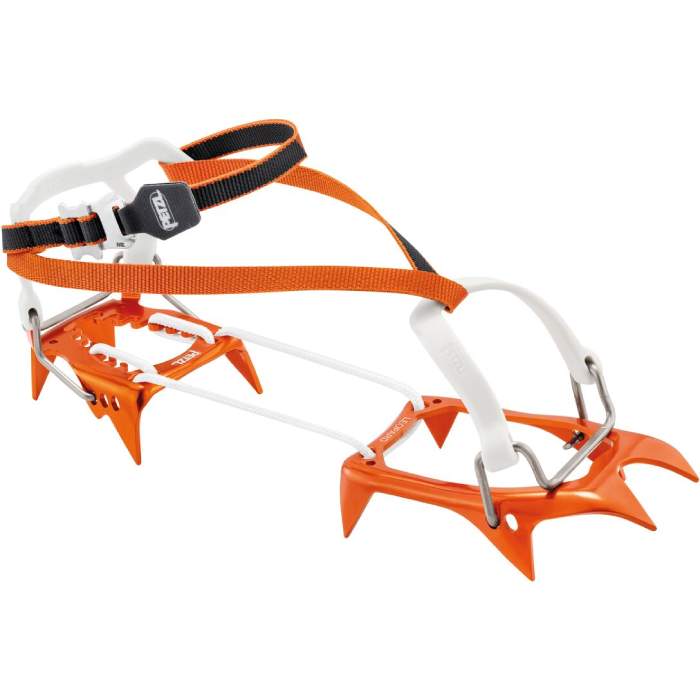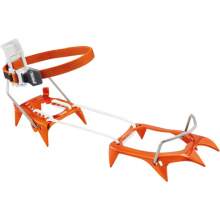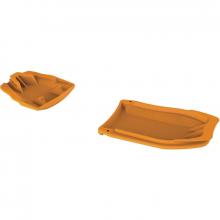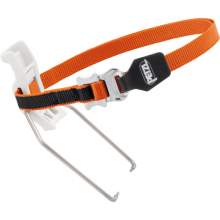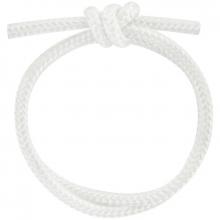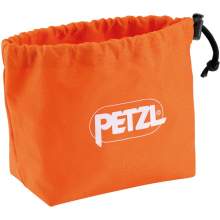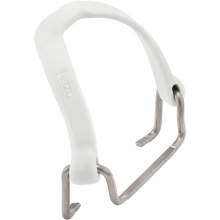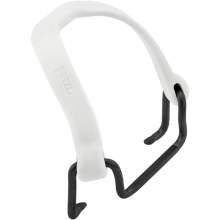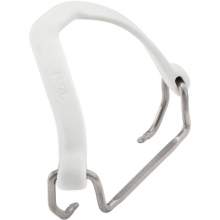Describes with words and helpful photos, how to protect your crampon.
Leopard Flexlock
Description
Ultra-lightweight crampon for ski touring and snow approaches.
Attack snow approaches with ease! Constructed with aluminum, LEOPARD crampons are ultra-lightweight. Ten points provide stability when walking in hard snow. The linking system for the front and rear sections is flexible so the crampons can easily be folded down to optimize space in your pack. Available in two binding systems to adapt to different footwear (with or without toe and heel welts), it's the ideal choice for ski touring or snow approaches.
- Ultra-lightweight and compact:
- Aluminum crampons with high-modulus polyethylene (HMPE) CORD-TEC linking system to optimize weight
- Flexible linking system allows the crampons to pack down small in their transport pouch - Designed for ski touring and snow approaches:
- 10-point configuration maximizes stability on hard snow
- Available in two different binding systems to adapt to different footwear, with or without toe and heel welts: LEVERLOCK FIL for footwear with toe and heel welts, FLEXLOCK for footwear without toe and heel welts
- Tool-free length adjustment
- CORD-TEC transport pouch included - Completely modular ALPEN ADAPT system:
- Heel pieces, cords, and binding system can be replaced separately
- Compatible with all toe bails to fit most footwear, with or without toe welts: stiff, flexible, telemark boots, snowboard boots
- Compatible with ANTISNOW LEOPARD system to help limit snow buildup in a variety of snow conditions - Material(s): Aluminum, stainless steel, nylon, high-modulus polyethylene
- Crampons come with protective transport bag
Retail price
When you click a link below and then checkout online, no matter what you buy (climbing gear or not), we get a small commission that helps us keep this site up-to-date. Thanks!
Weight per Pair (g / oz)  Weight per Pair (g / oz)In grams and ounces, the weight of both crampons together, as stated by the manufacturer/brand. If there are differences in weight (due to multiple sizes or optional accessories) we'll note those here. | 385 g / 13.58 oz |
| Ideal Uses | Racing / Skimo (super light) Glacier Travel / Mountaineering |
| Binding System | Universal |
| Sizing | One size fits 36-46 |
| Front Points | Horizontal Dual |
| Front Point Offset | No |
| Number of Points | 10 |
| Main Material | Aluminum, stainless steel, nylon, high-modulus polyethylene |
| Wear Indicators | No |
| Anti-Ball Plates | Sold Separately (see the plates here) |
| Crampon Case | Included |
| Heel Spur Attachment | None made for this model |
Certification  CertificationsThe main climbing gear certifications are CE and UIAA--and normally the UIAA creates the rules that the CE body also supports. When possible, we try to list all the certifications the product carries. To sell a climbing product in Europe, the device must be CE certified. There are no official requirements to sell climbing gear in the US. The UIAA certification is a voluntary process. Learn MoreRock and Ice Certifications Guide |
CE, EN, UIAA |
No reviews yet.
If you know of a good product video that should be here, let us know, and we'll put it up.
If you're looking for gear videos in general, check out our Vimeo and YouTube channels to see the newest gear.
A checklist helping you monitor your crampon health, helping to know when to retire your crampon.
Helpful instruction for inspecting Petzl crampon.
How to use Petzl crampon correctly, maintenance, general information with instructional pictures.
The UIAA equipment standard provides a baseline for equipment performance in a test lab under controlled conditions on new equipment. Although these test conditions are relevant to the conditions encountered climbing, conditions encountered at the crags and the condition of the equipment are equally important. This recommendation from the UIAA member federation The British Mountaineering Council (BMC) provides vital equipment information that is NOT explicitly addressed in the standard, particularly failure modes of the equipment and recommendations for the use, inspection, maintenance, and retirement of equipment.
A pictoral representation of the UIAA-153 and EN-893 standards for crampons.

